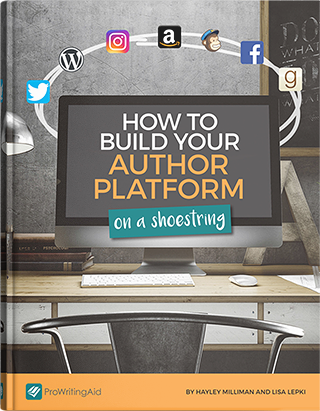
There’s a certain level of humility that hits you when you are on your hands and knees, polishing a brass bar that people rest their dirty shoes on, in the middle of the afternoon at 31 years old.
The year was 2016. I’d begun publishing my books, dreaming of being a successful author with a rabid following. I had spent the previous years doing really well as a freelance copywriter, expecting to never again have to scrounge for clients thanks to my wild success. I was a made man with a bright future.
Then, it all came crashing down.
At the end of my rope financially, I took a job at a local bar, slinging beers a few nights a week for tips. This was not where I envisioned my life going.
I was in my thirties! While my friends were all moving up in the world, buying big houses and advancing up the corporate ladders of their respective companies, I was pouring beer in mugs to pay my bills.
There’s nothing wrong with that, of course. I don’t want to demean the good bartenders out there. Honest work is honest work and should be done with pride.
But still, when you expect life to turn out one way and it takes a hard left turn, it’s difficult to accept.
What I didn’t realize in my frustration, however, was that many successful, influential, brilliant authors also had rather mundane day jobs. And a lot of them didn’t “arrive” until they were deep into their mid-life years.
Not only is this encouraging, I also find it really interesting. So let’s take a look at ten great literary legends, the jobs they held, and how long it took for them to release their seminal works. Then we’ll feel better about ourselves.
1. William S. Burroughs
One of the most famous postmodernist authors of all time, William S. Burroughs was discharged from the United States Army in 1942 on psychiatric grounds. That puts him at 28 years old, where he is adrift and trying to figure out his life (a stone’s throw from my crisis at 31 years old).
His first big, influential work was Junkie, which came out in 1953. His literary influence really started gaining steam when he was 39 years old.
His day job: Bug exterminator. He took the job after leaving the military, moving from St. Louis to Chicago. Imagine leaving your hometown and taking an extermination job when the people around you have all figured out their lives.
2. Agatha Christie
The creator of Hercule Poirot, Christie needs no introduction in literary circles. Her legacy is certainly set. She, like many, worked alongside soldiers in the war effort during The Great War. For four years, she worked as a volunteer nurse in a military hospital starting at the age of 24 years old.
Her breakout, of course, was the creation of Poirot, but she didn’t really achieve widespread success until she published her third novel, Murder on the Links, in 1923 (again featuring Poirot). She was 33 years old at the time.
Her day job: Apothecary’s assistant. After two unpaid years working in the war, Christie was able to qualify to be an assistant to the pharmacists of the day. She received an annual wage of £16—which would equal about $1,300 today. Annually. Don’t you feel better about your paycheck now?
3. Charles Dickens
The man who pretty much created Christmas with A Christmas Carol and crafted such legendary works as David Copperfield and Oliver Twist bounced around quite a bit, working as a journalist and legal clerk.
While The Pickwick Papers launched his career, it wasn’t until he began writing Oliver Twist that he really pushed himself into the upper echelon of literary writers. He released it as a serial, beginning in 1837, which puts him at 25 years old. But make no mistake, he worked his tail off more than most in the years prior.
His day job: Factory worker. At just 12 years old, Dickens earned about $25/week in today’s money pasting labels onto pots of boot polish. I was still learning how to shoot a basketball at 12 years old.
4. Joseph Heller
Joseph Heller was the author of Catch-22, one of the most famous anti-war novels in history. His follow-up works never matched the success of that first one, but he remained an influential figure his whole life.
(Famously, an interviewer commented to him that he never produced anything as good as Catch-22. He replied, “Who has?”)
He slogged through Catch-22 over the course of 8 years(!), finally finishing the novel and delivering it to his publisher at the age of 38.
His day job: Blacksmith’s apprentice. He worked this job before enlisting in the military (seeing a trend here?). He also worked in advertising right before he published Catch-22.
5. James Joyce
One of the most influential writers of the 20th century, James Joyce has an impressive resume, including Ulysses, Finnegans Wake, and A Portrait of the Artist as a Young Man. And that’s just a few!
His depictions of middle-class Irish life in a short story collection called Dubliners were what brought him his first taste of fame and acclaim in the literary world. He published Dubliners in 1914, at the age of 32.
His day job: Movie theater operator. While struggling to find a publisher for his work, James Joyce owned and operated Dublin’s first movie theater. This might sound appealing and exciting for the time period, but the business collapsed a year later.

6. Jack Kerouac
Raise your hand if you were in a college lit course and somebody raised their hand to tell the class that On The Road was their favorite book! Yes, Kerouac wrote a masterpiece, but it seemed any aspiring English major felt the need to put that one on their list to impress other people. Regardless, Jack Kerouac inspired not just other literary creators, but cultural icons like The Beatles and Bob Dylan as well.
On The Road was his second novel (of about a dozen overall), which he published in 1957. That puts him at 35 years old when he struck it big.
His day job: Dishwasher. I had a lot of jobs to choose from, including cotton picker, gas station attendant, and night guard. It’s hard to get more average and relatable than being a dishwasher. The same guy who inspired The Doors scrubbed plates to get by. There’s something beautiful in that.
7. Jack London
The Call of the Wild. White Fang. Jack London’s notable works have a very special color to them. Both set in the Klondike Gold Rush of the late 1800s, these books are great commercial fiction, and Jack London was one of the first American authors to become a mainstream celebrity, internationally. The man sold a lot of books.
He published The Call of the Wild at 27 years old. What sets London’s story apart is that he really pushed to sell his work with commercial fiction. In 1900, at about 24 years old, he managed to amass a respectable living of around $77,000 in today’s dollars by selling short works to the burgeoning magazine market. There’s a strong lesson in there about hustle.
His day job: Oyster pirate. On the other end of the “relatable” scale, I included Jack London’s story just because I wanted to publish a blog post somewhere with the phrase “oyster pirate” in it. He used to steal oysters from farms in San Francisco Bay and sell them at a marketplace in Oakland. Again: hustle. A different kind of hustle, but hustle nonetheless.
8. Raymond Carver
One of America’s greatest writers and a legendary poet, Raymond Carver was well-known in higher education circles for his short stories and poems.
He managed to get a short story published entitled, “Will You Please Be Quiet, Please?” in 1967 at 28 years old. This was enough to get him attention and accolades that he could then lean on for teaching jobs and more full-time writing.
His day job: Janitor. Carver spent the mid-1960s as a night custodian in Mercy Hospital. He did his janitorial work for an hour and then wrote the rest of his shift. Not exactly the most virtuous way to do it, but it worked.
9. JD Salinger
The students who didn’t say On The Road was their favorite book in college usually said that The Catcher in the Rye was. JD Salinger wrote of adolescent alienation using Holden Caulfield, and what lit geek could resist?
The Catcher in the Rye was published in 1951, striking massive success for Salinger at the age of 32. He would answer this success by retreating as far away from the public eye as humanly possible.
His day job: Luxury cruise activities director. So great. At 22 years old, Salinger was in the midst of trying his hand at writing while also arranging activities on a luxury Caribbean cruise liner. He wrote a short story that was set to be published, but then there was the attack on Pearl Harbor. Salinger was drafted into the Army to fight in World War Two, and it took a chance meeting with, of all people, Ernest Hemingway while in Paris to convince him to continue trying to be a writer. Good thing he did.
10. Kurt Vonnegut
Slaughterhouse-Five. Hero of the anti-war movement. That cameo in Rodney Dangerfield’s Back to School. You know who Kurt Vonnegut is.
Vonnegut was an accomplished novelist and writer by the time Cat’s Cradle was released in 1963, but he had struggled up to that point to complete work thanks to a host of personal challenges in his life. Cat’s Cradle was the first time the literary world really recognized Vonnegut as a talented writer—and he was 41 years old at the time.
His day job: Car dealer. He had a few great ones and his biography is loaded with entertaining stories (including the fact that Vonnegut survived a bombing attack during World War Two as a captured prisoner of the Germans by hiding in an underground meat locker), but my favorite is that he and a partner opened a Saab dealership in 1957 at the age of 35. Tell me you wouldn’t buy a Saab from Kurt Vonnegut.
It’s very easy to get discouraged in your efforts to become a full-time writer and a literary genius. Just remember that the path to success is different for everybody. Other than lots of wartime, the only thing these writers had in common during those periods of their lives is that they kept writing. They didn’t give up just because they weren’t where they wanted to be.
It’s up to you to do the same. And me, too.


